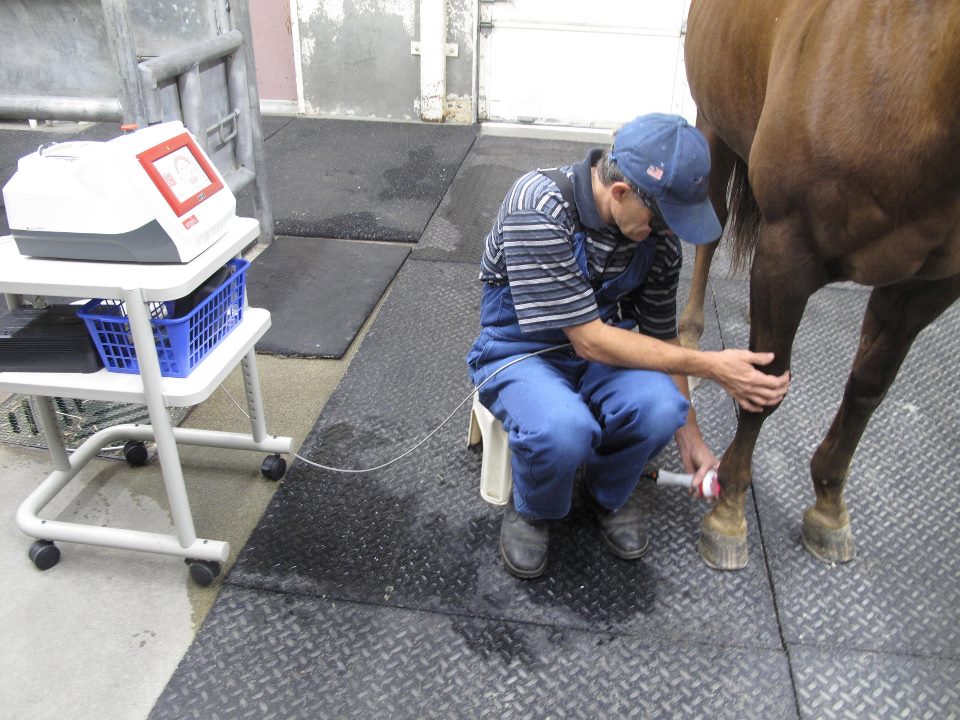Exploring the Holistic Approach of Equine Therapy for Individual Growth
Exploring the Holistic Approach of Equine Therapy for Individual Growth
Blog Article
Laser Therapy in Equine Therapy: A Modern Method to Improving Equine Health And Wellness
Laser treatment has emerged as a critical strategy in equine treatment, utilizing focused light energy to cultivate mobile repair and speed up recovery from a selection of disorders. This non-invasive approach is specifically reliable in managing musculoskeletal injuries, wounds, and inflammatory problems, dramatically boosting overall horse health. By stimulating mitochondrial task and increasing ATP production, laser treatment not just enhances flow however also offers considerable pain relief. As this ingenious treatment proceeds to get traction, it opens fascinating opportunities for attending to persistent conditions like joint inflammation and unguis issues, indicating a transformative shift in vet care. What makes this modality specifically compelling?
Understanding Laser Therapy
Laser treatment, a non-invasive therapy modality, has actually gotten considerable traction in equine medicine as a result of its effectiveness in promoting recovery and pain alleviation. This sophisticated healing approach uses concentrated light power to pass through tissues, promoting cellular repair service and regrowth. The underlying device entails the excitement of mobile mitochondria, resulting in increased production of adenosine triphosphate (ATP), the energy currency of cells. Boosted ATP degrees speed up cells fixing procedures and decrease inflammation, making laser therapy particularly efficient for dealing with bone and joint injuries, wounds, and various other inflammatory problems in equines.
There are a number of kinds of lasers made use of in equine therapy, each with specific wavelengths and power outputs tailored to different healing requirements. Low-level laser treatment (LLLT), additionally referred to as cold laser therapy, uses lower power degrees to stimulate cell function without triggering thermal damages. High-intensity laser therapy (HANDLE), on the other hand, uses higher power levels to attain much deeper cells infiltration and even more considerable therapeutic effects.
Veterinarians utilize different laser devices and techniques relying on the problem being treated and the preferred deepness of cells penetration. Proper training and know-how are crucial for guaranteeing the secure and reliable application of laser treatment, thereby optimizing its healing possibility while decreasing dangers.
Benefits for Horse Health And Wellness
With a strong understanding of exactly how laser treatment functions, it is important to discover its countless benefits for equine health. By stimulating mobile function, laser treatment advertises faster wound recovery and aids in the regrowth of damaged tissues.
Additionally, laser therapy has actually been revealed to boost circulation, therefore improving blood flow to affected areas. Boosted blood circulation makes sure that essential nutrients and oxygen are delivered extra successfully, facilitating the recovery procedure. Furthermore, laser treatment's anti-inflammatory effects aid in minimizing swelling and pain, which is crucial for the general wellness of the steed.
Discomfort monitoring is an additional substantial advantage. By launching endorphins and obstructing discomfort signals, laser treatment gives effective, non-invasive remedy for both severe and chronic pain. This can add to improved wheelchair and lifestyle for the animal.
Finally, laser treatment is a non-invasive therapy alternative, minimizing the threat of complications related to more invasive procedures. Its convenience and efficacy make it an invaluable device in modern-day equine veterinary medication.
Common Problems Treated

One more common Find Out More condition treated with laser therapy is joint inflammation. Steeds experiencing both acute and persistent joint inflammation benefit from the anti-inflammatory results of laser treatment, which assists to relieve discomfort and boost joint function. Additionally, laser treatment is used in the monitoring of injuries. Whether taking care of surgical cuts or terrible injuries, the technique advertises quicker tissue repair and reduces the risk of infection.
Equine breathing problems, such as reoccurring airway obstruction (RAO), likewise react positively to laser treatment. Laser treatment is advantageous in dealing with unguis problems, consisting of laminitis and abscesses.
Treatment and Safety
Applying laser therapy in equine therapy entails a precise procedure to guarantee both efficacy and safety and security. Equine Therapy. The process begins with a complete hop over to here vet analysis to establish the viability of laser therapy for the steed's particular problem. As soon as considered ideal, the therapy area is prepared by cleaning and, if required, clipping the hair to improve laser penetration
The practitioner needs to pick the right kind of laser, generally a low-level laser (LLLT) or a high-power laser (HPL), depending on the problem being dealt with. The laser device is after that calibrated to the proper wavelength, power, and period settings. Throughout the application, the specialist relocates the laser over the targeted location in an organized fashion, ensuring consistent and even exposure.
Safety and security protocols are strictly stuck to, including using safety eyeglasses for both the expert and the steed. Additionally, it is crucial to keep track of the equine for any indicators of discomfort or damaging responses throughout the treatment. Post-treatment, the steed is usually provided a duration of remainder to enable the healing results to manifest.

Future of Equine Laser Treatment
As improvements in veterinary medication continue to unfold, the future of equine laser treatment holds considerable guarantee. Emerging technologies and deeper clinical insights are set to fine-tune and broaden the applications of laser treatment for equines.
Additionally, ongoing research right into the molecular and cellular systems of laser therapy will likely produce enhanced procedures tailored to details conditions, improving effectiveness and reducing therapy times. Customized treatment strategies based upon genetic and biochemical markers could come true, making sure that each horse more information gets one of the most ideal and efficient treatment.
Additionally, regulatory developments and standardization of protocols will certainly enhance the trustworthiness and reliability of laser therapy in equine method. Equine Therapy. As these advancements remain to emerge, equine laser treatment is poised to come to be an important element of veterinary care, offering enhanced healing and improved lifestyle for horses internationally
Conclusion

Report this page